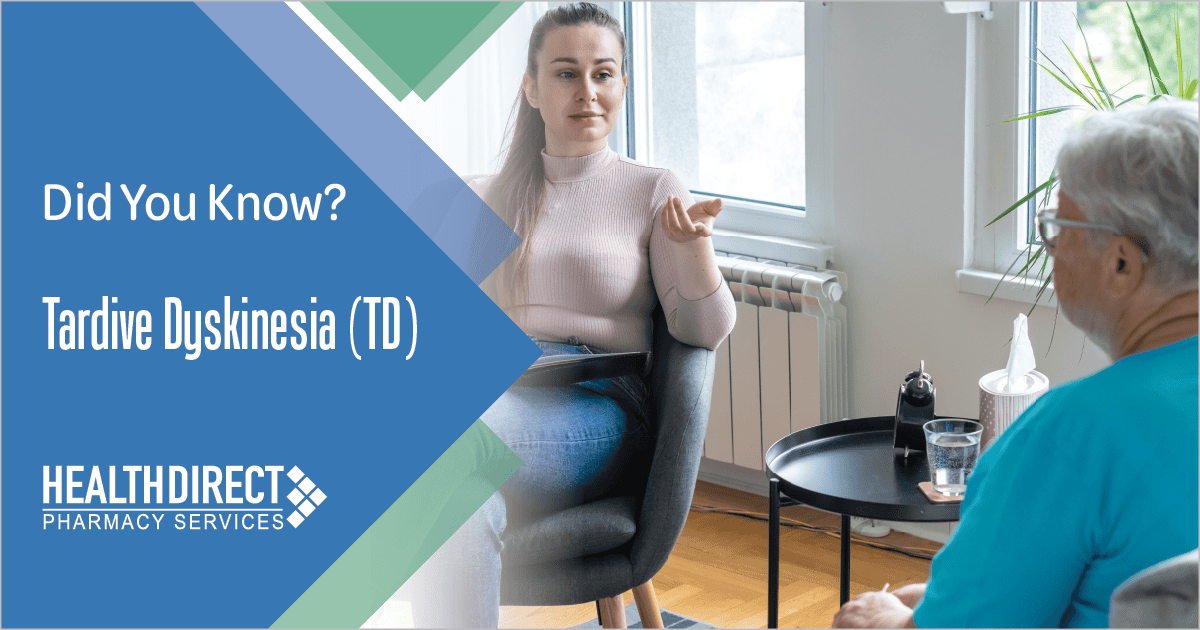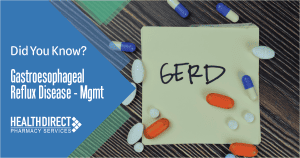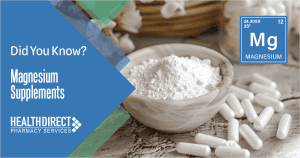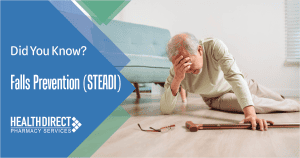What is Tardive Dyskinesia (TD)?
Tardive Dyskinesia (TD) is a drug-induced involuntary movement disorder (DIMD) generally of the tongue, lower face, jaw, and extremities (but sometimes also pharyngeal, diaphragmatic, and trunk muscles) that can persist even after the discontinuation or alteration of neuroleptic medication regimens.
Movements may be stereotypic (repetitive, purposeless), choreoathetotic (irregular, dance-like), or athetotic (slow, writhing).
TD usually presents after at least 3 months of antipsychotic use and can lead to chronic dyskinesias if not detected early and managed appropriately.
Who is at Risk for Developing Tardive Dyskinesia (TD)?
Antipsychotic Use (and other dopamine receptor blocking agents – DRBAs) is the Primary Risk Factor for Developing Tardive Dyskinesia (TD)
- Overall antipsychotic medication use has increased across the general population, including children, adolescents, adults and geriatrics.
- Antipsychotic medications are FDA approved for bipolar disorder, schizophrenia, and adjunct therapy in major depressive disorder.
- Some antipsychotic medications and dosage forms are approved for acute management of mania and paranoia.
- They are often used off-label for mood disorders, agitation and behavioral symptoms of dementia, despite black box warnings in this population.
- Increased broader antipsychotic usage in the general population has increased the incidence rate of TD, although many patients have yet to be diagnosed and treated.
- Longer duration of therapy on an antipsychotic medication increases the risk of developing TD.
- 45-60% of antipsychotic regimens are prescribed for long-term use.
- Other dopamine receptor blocking agents (DRBAs), such as metoclopramide, can also precipitate development of TD, especially when used for longer durations, and in older adults that may have altered or delayed metabolism of the medication(s).
- Higher incidence with first generation antipsychotics vs. second generation antipsychotics.
| PATIENT RISK FACTORS | TREATMENT RISK FACTORS |
|---|---|
| Age ≥ 50 years | Cumulative exposure to antipsychotics |
| Diagnosis of mood disorder | Treatment with anticholinergics |
| Postmenopausal status | History of acute drug-induced movement disorders |
| Substance abuse | Antidopaminergic (D2) potency of antipsychotic |
*adapted from American Diabetes Association 2024 Standards of Care in Diabetes
MEDICATIONS THAT REQUIRE MONITORING FOR TD
| FIRST-GENERATION ANTIPSYCHOTICS | ||
|---|---|---|
| Chlorpromazine (Thorazine) | Loxapine (Loxitane) | Thioridazine (Mellaril) |
| Molindone (Moban) | Haloperidol (Haldol) | Thiothixene (Navane) |
| Fluphenazine (Prolixin) | Perphenazine (Trilafon) | Trifluoperazine (Stelazine) |
| SECOND-GENERATION ANTIPSYCHOTICS | ||
|---|---|---|
| Aripiprazole (Abilify) | Loxapine (Loxitane) | Quetiapine (Seroquel, Seroquel XR) |
| Asenapine (Saphris) | Lumateperone (Caplyta) | Risperidone (Risperdal) |
| Brexpiprazole (Rexulti) | Lurasidone (Latuda) | Ziprasidone (Geodon) |
| Cariprazine (Vraylar) | Olanzapine (Zyprexa) | |
| Clozapine (Clozaril) | Paliperidone (Invega) | |
| lloperidone (Fanapt) | Pimavanserin (Nuplazid) | |
| OTHER DRBA’s | ||
|---|---|---|
| Prochlorperazine (Compazine, Compro) | Trimethobenzamide (Tebamide, Tigan) | Metoclopramide (Reglan) |
| Promethazine (Phenergan, Promethegan, Phenadoz) | Thiethylperazine (Torecan) | |
The American Psychiatric Association (APA) recommends:
- Screen for TD before starting or changing DRBA treatment.
- Monitor for signs of TD at every clinical encounter.
- Conduct a structured TD assessment every 6 to 12 months, depending on patient’s risk,
and if new or worsening movements are detected at any clinical encounter.
CMS regulations also state that adverse effects related to antipsychotic medications, including movement disorders such as tardive dyskinesia, need to be screened for and monitored while residents receive these medications in the Skilled Nursing Facility (SNF).
SELECT CMS REGULATIONS & GUIDANCE
CMS Regulations also state that adverse effects related to DRBA therapies (i.e. antipsychotics), such as movement disorders and tardive dyskinesia, must be screened for and monitored while residents receive these medications in the Skilled Nursing Facility (SNF).
Recognize and Report Symptoms of TD
From CMS – Each resident’s medication regimen must be managed and monitored to promote or maintain the resident’s highest practicable mental, physical, and psychosocial well-being.
Select CMS Regulations & Guidance
| F757 – §483.45(D) UNNECESSARY DRUGS AND F758 – §483.45(C)(3) AND (E) PSYCHOTROPIC DRUGS | The use of a medication without adequate monitoring may increase the risk of adverse consequences |
| MEDICATION MANAGEMENT MONITORING FOR EFFICACY AND ADVERSE CONSEQUENCES | Monitoring and accurate documentation of the resident’s response to any medication(s) is essential to evaluate the ongoing benefits as well as risks of various medications |
| PSYCHOTROPIC MEDICATIONS AND ANTIPSYCHOTIC MEDICATIONS (F758 ONLY GUIDANCE) | Residents who take these medications must be monitored for any adverse consequences. TD is considered a potential adverse consequence |
| MONITORING OF PSYCHOTROPIC MEDICATIONS | If psychotropic medication is identified as possibly causing or contributing to an adverse consequence, the facility and prescriber must document it in the medical record. TD is considered a potential adverse consequence. |
* Select guidance is provided for education and information purposes. See full CMS State Operations Manual for long-term facilities for complete information.
** adapted from Centers for Medicare & Medicaid Services – State Operations Manual Pub. 100-07. Appendix PP – Guidance to Surveyors for Long Term Care Facilities. Baltimore, MD: US Dept of Health and Human Services; 2017
The AIMS Assessment:
The Abnormal Involuntary Movement Scale (AIMS) is the standard structured assessment for the initial screening and the routine monitoring of TD symptoms.
This 10-minute subjective patient assessment uses a 5 point (0-4) rating scale for recording movement scores for 7 body areas: face, lips, jaw, tongue, upper extremities, lower extremities, and trunk.
Items 1 to 7 rate the severity of movements in different body areas
0 – No dyskinesia
1 – Minimal or slight dyskinesia
(Low amplitude, present during some but not most of the exam)
2 – Mild dyskinesia
(Low amplitude and present during most of the exam, or moderate amplitude and present during some of the exam)
3 – Moderate dyskinesia
(Moderate amplitude and present during most of the exam)
4 – Severe dyskinesia
(Maximal amplitude and present during most of the exam)
Item 8 rates the global severity of abnormal movements
Item 9 measures incapacitation and item 10 measures awareness
Items 11 and 12 rate dental status
Abnormal Involuntary Movement Scale (AIMS) Worksheet
Tips for performing an AIMS Assessment:
BEFORE THE EXAM
- Always observe the patient. The exam starts from the moment the examiner lays eyes on the patient and must start observing their movements immediately.
- Abnormal movements can fluctuate and can change in amplitude when stressors are introduced. It is important to observe the patient at all times during the exam in order to get a wholistic picture of their symptoms.
- Ask the patient to remove their shoes and socks and anything in their mouth. This will be able to help clearly identify movements.
- Seat the patient in a firm chair with no arms. Have them rest their arms in front of their body.
DURING THE EXAM
Mouth observation: Observe the tongue at rest and identify any changes in tongue movement
- Have the patient open their mouth for 15 seconds, close, and then repeat for a total of 2 times.
- Have the patient protrude their tongue for 15 seconds, stop, and repeat for a total of 2 times.
Finger tapping: Observe the face and legs
- Have patient tap each finger rapidly to their thumb for 15 seconds per hand.
- While looking at finger movements, it is also important to observe facial, leg, and other body movements.
Nonphysical activation maneuver
- Have patient do a mental task (recite the names of months backwards, count backward from 100, etc.) and observe any movements.
Arm elevation: Observe the trunk, legs, and mouth
- Have patient hold arms out flat, palms down for multiple seconds and observe any movements.
FOLLOW-UP EXAMS
- Even those with already diagnosed tardive dyskinesia should receive AIMS exams at a minimum of every 6 months for high-risk patients and 12 months for stable patients. This is necessary to measure the progression of TD over time.
SELF-REPORTING
- Most patients are aware of their abnormal movements and can communicate onset, characterization and severity to their healthcare provider.
- Patients may not recognize some involuntary movements they are experiencing to self report, physical examination should be achieved on all patients suspected of developing tardive dyskinesia or other
DIMDs (i.e. AIMS)

Differentiating Drug-Induced Movement Disorders
| When did onset of movements occur? | What does it look like | How might it change? | |
|---|---|---|---|
| Acute Movement Disorders | Acute: hours to months | Akathisia (ex. restlessness), dystonia (ex. muscle contractions), parkinsonism (ex. tremors) | May resolve after discontinuation of antipsychotics |
| Tardive Dyskinesia | Delayed: months to years | Stereotypic (ex. repetitive, purposeless), athetoid (ex. slow, writhing), choreiform (repetitive, jerky) movements | Symptoms may be masked or revealed by changes in antipsychotic medication regimen |

Impacts of TD on Patients’ Wellness and Self-Esteem
Tardive dyskinesia often causes people to become embarrassed about their abnormal movements. Among a sample of 204 patients with tardive dyskinesia, 76% of them were noted to be embarrassed by or self-conscious about their involuntary movements.
Abnormal movements associated with TD can also decrease physical functioning of a patient. These can present as respiratory, orofacial, and truncal dystonia which can interfere with activities of daily life and add unneeded stress to the patient’s life.
These movements have had reported moderately to extremely negative effects on confidence, self-esteem, self-worth, and overall quality of life.
Pharmacological Management of Tardive Dyskinesia:
In previous years, there was no evidence-based treatment for tardive dyskinesia and patients who developed it had no answer for their symptoms. They could be taken off their antipsychotic medications but since TD symptoms are commonly non-reversible, often symptoms persisted despite removal of the DRBA. Recent studies have found strong evidence for the efficacy and tolerability of VMAT2 inhibitors in the treatment of tardive dyskinesia and the use of them as part of a patient and symptom management plan.
American Psychiatric Association (APA) recommends that patients who have moderate to severe
antipsychotic-induced TD be treated with a VMAT2 inhibitor:
- Treatment with a VMAT2 inhibitor can also be considered in mild TD based on factors like patient preference, other impairments, and psychosocial functioning.
- New generation VMAT2 inhibitors are preferred because there is greater evidence supporting their use and tolerability profile.
- Anticholinergic medications should not be used in TD
- They do not alleviate symptoms and can even aggravate them in some instances.
Options for treatment based on the Modified Delphi Panel Consensus Recommendations:
(Can be any combination of these)
- Consider treatment with a VMAT2 inhibitor
- Review and consider modifying anticholinergic TD regimen
- Review and consider modifying antipsychotic regimen
- Discuss treatment options with the patients or appropriate caregivers
Comparison of VMAT-2 Inhibitors for Tardive Dyskinesia
Brand name | Valbenazine [6,7] Ingrezza | Deutetrabenazine [6,8] Austedo |
|---|---|---|
| Available dose formulation | Ingrezza: 40, 60, 80 mg capsules Ingrezza Sprinkle: 40, 60, 80 mg capsules | Tablets: 6, 9, and 12 mg XR (extended-release) 6, 9 and 24 mg |
| Other indications | Chorea associated with Huntington’s disease | Chorea associated with Huntington’s disease |
| Contraindications relevant to TD | None | Hepatic impairment, use of reserpine, MAOIs, tetrabenazine or valbenazine |
| Warnings and precaution contained in Highlights of Prescribing Information | Somnolence; QT interval prolongation | QT interval prolongation; neuroleptic malignant syndrome; akathisia, agitation, restlessness, and parkinsonism (latter not applicable to TD); sedation/somnolence |
| Dosing frequency | Once daily | Twice daily (IR) Once daily (XR) |
| Recommended dosing | Take with or without food; start at 40 mg daily; increase to 80 mg daily after one week as indicated and tolerated. Titration to 60 mg daily after one week of 40 mg, then further titration to 80 mg as indicated may be considered. A therapeutic dosage of 40 mg or 60 mg once daily may be appropriate based on patient’s clinical response and tolerability. | Take with food; start at 12 mg/day, increase by 6 mg/day at weekly intervals up to 48 mg/day, based on tolerability and response |
| CYP2D6 poor metabolizers | Maximum recommended dose is 40 mg/ day | Maximum recommended dose is 36 mg/day |
| Hepatic impairment | Moderate-to-severe hepatic impairment: maximum recommended dose is 40 mg/day | Contraindicated |
| Renal impairment | Dosage adjustments are not necessary for patients with mild, moderate, or severe renal impairment | Package insert does not provide any recommendations (cites a lack of studies in this population), but the metabolites are excreted renally |
| Drug-drug interactions | Valbenazine increases digoxin levels; consider valbenazine dose reduction with strong CYP2D6 inhibitors; with strong CYP3A4 inhibitors the maximum recommended dose is 40 mg daily; use is not recommended with MAOIs or CYP3A4 inducers | Additive sedation may occur with alcohol and other CNS depressants; with strong CYP2D6 inhibitors, the recommended maximum dose is 36 mg/day |
| QT prolongation recommendation | If the patient is at increased risk for QT prolongation, assess QT interval before increasing the dose | If the patient is at increased risk for QT prolongation, assess QT interval before and after increasing the dose above 24 mg/day |
References:
- American Psychiatric Association. Diagnostic and Statistical Manual of Mental Disorders-Text Revision. 5th ed. Arlington, VA: American Psychiatric Association; 2022.
- Munetz MR, Benjamin S. How to examine patients using the Abnormal Involuntary Movement Scale. Hosp Psychiatry. 1988;39(11):1172-1177.
- Madubueze N, Hammonds LS, Lindfors E. Implementing the Abnormal Involuntary Movement Scale AIMS as an evidence based practice screening tool in adult patients taking antipsychotics to detect and treat tardive dyskinesia. J Psychiatry. 2019;22(1):1-7.
- Caroff SN, Citrome L, Meyer J, et al. A modified Delphi consensus study of the screening, diagnosis, and treatment of tardive dyskinesia. J Clin Psychiatry. 2020;81(2):19cs12983.
- Ward, K. M., & Citrome, L. (2018). Antipsychotic-Related Movement Disorders: Drug-Induced Parkinsonism vs. Tardive Dyskinesia-Key Differences in Pathophysiology and Clinical Management. Neurology and therapy, 7(2), 233–248. https://doi.org/10.1007/s40120-018-0105-0
- Keepers, G. A., Fochtmann, L. J., Anzia, et al. The American Psychiatric Association Practice Guideline for the Treatment of Patients With Schizophrenia. The American journal of psychiatry, 177(9), 868–872. https://doi.org/10.1176/appi.ajp.2020.177901
- Touma, K. T. B., & Scarff, J. R. (2018). Valbenazine and Deutetrabenazine for Tardive Dyskinesia. Innovations in clinical neuroscience, 15(5-6), 13–16.
- Ingrezza and Ingrezza Sprinkle (valbenazine) capsules package insert. San Diego, CA: Neurocrine Biosciences, Inc.; 2024 Apr.
- Austedo and Austedo XR (deutetrabenazine) tablets package insert. Parsippany, NJ: Teva Neuroscience, Inc.; 2023 Feb




